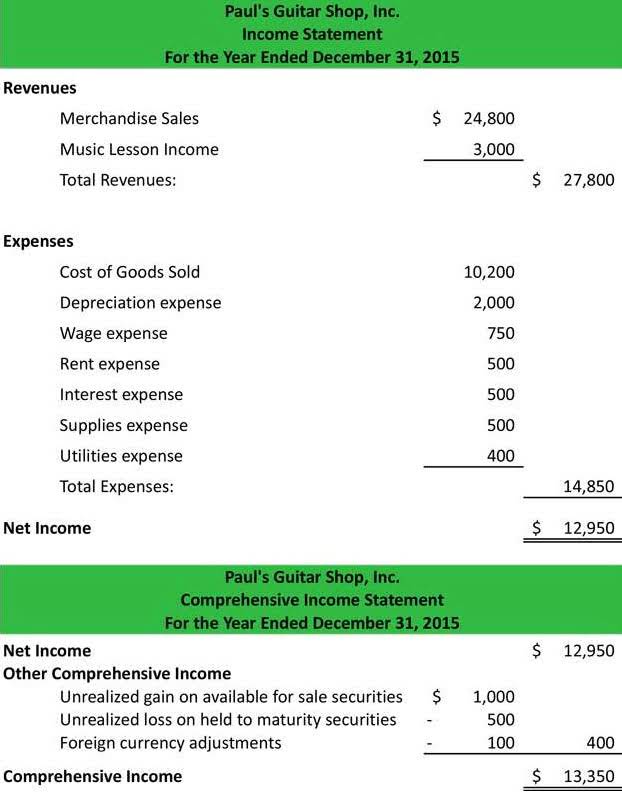Currently Empty: 0,00 د.إ

Retailers, on the other hand, commonly calculate the cost of inventory at a retail level. Significant differences in valuation, therefore, can exist depending on the valuation method selected and the retailer´s markup beyond the wholesale cost of the inventory. The Internal Revenue Service allows businesses to use either the direct cost method or the retail inventory method for tax-reporting purposes. Retailers often use the retail inventory method to value inventory.
Retail inventory method

QuickBooks is one of the most popular accounting software programs on the market and while it is one of the best options, it’s not necessarily the best for every business. For example, while QuickBooks is very robust, it may involve a steeper learning curve and come at a higher cost than competitors–especially https://x.com/BooksTimeInc for businesses that want to use its payroll features. By automating it with cost accounting software, you can save time and money. NetSuite is one example of software that offers cost accounting capabilities.
Inventory: Retail method
An inventory system provides retail-based businesses a comprehensive account of available items and the monetary value of these inventory items. The cost of the inventory affects actual profit, and inventory in stock is considered an asset for the purposes of taxation and business valuation. Using the retail method of accounting, retailers use the projected retail cost to value the inventory.

Tax ramifications of inventory costing
That’s why for retailers—especially those that are in the process of scaling—it’s worth getting up to speed on retail methods of accounting. The cash flow statement is similar to the income statement in that it tracks the money that comes in and out of your business. However, the cash flow statement is more specific about when these transactions occur. For example, in your income statement, you might have listed an invoice in your sales, but your client might have 30 days to pay the invoice.
- This ratio is the difference between the price the business paid for the items and the price they eventually sold for.
- Unfortunately, this complexity-increasing auditing risk tends to be more expensive and its effectiveness is limited to the talent and accuracy of a firm’s practitioners.
- Accounting automation tools play a key role in tax management by automating calculations, generating necessary tax reports, and providing timely reminders for tax deadlines.
- The weighted average method of inventory costing is often used when inventory is not perishable but stock can still easily be rotated or intermingled.
- While retail accounting tracks inventory based on sales price, cost accounting tracks each item based on its total acquisition cost.
Manual vs automated tracking inventory methods
This costing method is most often used when inventory is perishable and is a favorite for food retailers. Second, it uses retail prices, not cost prices, for easier calculations. Although cost accounting method can provide better accuracy, it usually requires more complex calculations.

Best Small Business Accounting Software in 2024

Retail accounting is an inventory valuation method that allows you to estimate your inventory value assuming prices are the same across units. Of the two, cost accounting is considered more complicated since it tracks a variety of factors involved in obtaining inventory, such as shipping, production costs, and development costs. As with any other accounting method, the first step in the retail method of accounting is to record all transactions. Cost accounting methods are typically not used to determine tax liabilities. While financial accounting presents information for external sources to review, cost accounting is often used by management within a company to aid in decision-making. Cost accounting can be beneficial as a tool to help management with budgeting.
This is why the calculations made using the retail inventory method should serve only as an estimate. Let’s assume you took a physical inventory count at the beginning of the quarter, and you know the actual cost of your inventory as of that date cost accounting vs retail accounting was $80,000. Reviewing the reports from your point of sale system you see that, as of the end of the quarter, your sales totaled $30,000.
Comparing the advantages and disadvantages of both methods
- Generally, retailers will use the cost method of accounting unless the retailer’s business model is centered around mark-up.
- It can come in handy if you’d like to choose between two or more assets, understand the benefits of an asset and budget more accurately.
- This method, rather than giving you a definitive answer to your inventory value and remaining stock, provides a rough estimation.
- To help illustrate the above retail accounting approaches, let’s look at an example.
- This percent is used to determine to cost complement to apply to inventory to determine the cost of sales.
The retail method of accounting is an inventory estimation technique used to compute the value of ending inventory without having to take a physical count. Businesses with large volumes of inventory, like grocery stores, use the retail method because it’s quick and affordable to perform, unlike a physical count. The IRS allows you to use any method you want to value your inventory for tax purposes. The caveat is, once you choose a method you have to stick with it, unless you get permission from the IRS to change your costing method. This rule is in place to keep business owners from “gaming the system” by frequently switching costing methods to get the best tax advantages. Let’s say your retail https://www.bookstime.com/ business sells yarn and knitting accessories.
It’s most common in businesses that sell high-ticket items or have a smaller stock quantity. For example, if your business sells jewelry, you’ll assign a price to each item based on its material and details. Due to the intricacies in its calculation, cost accounting is the more accurate method, however, it requires complex calculations.

